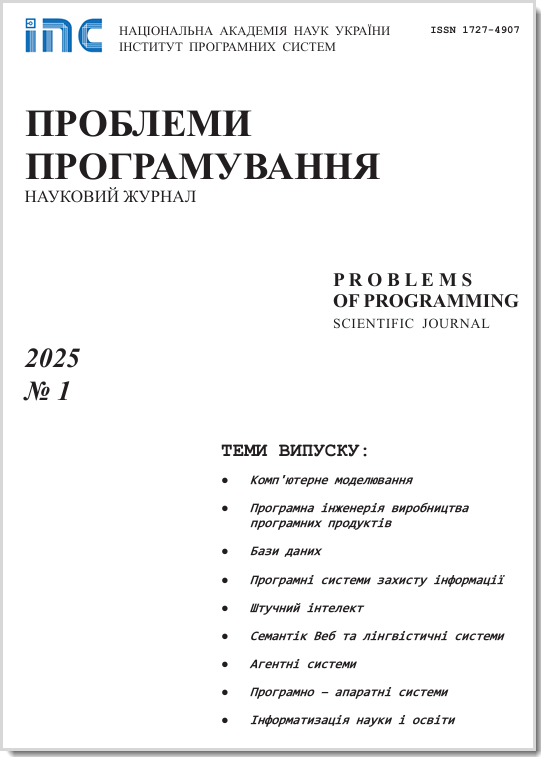Security basic model for applied tasks of the distributed information system
Abstract
Attacks, hazards and threats are considered as structured processes that affect the internal and external environment of the system of the applied tasks with a further impact on the output of these tasks. The concepts of security level and security level of a distributed information system are introduced, as well as the concepts of applied task, environment, and user contradictions. As the logical metrics of discrepancy detection the apparatus of semantic analysis is proposed, which (based on the reference knowledge base, the apparatus of text transformations) should be applied at the stage of loading of applied task and describe the input and output data, requirements to the environment of the task solution.
The result of the research is the proposed method for identifying additional data about hazards, threats, attacks, countermeasures to attacks, applied task-solving. This data is generated from the reference and augmented textual descriptions derived from the proposed contradictions. By building additional reference images of threats, attacks, countermeasures, it becomes possible to prevent the activation of new attacks on the distributed information system.
Problems in programming 2021; 2: 016-023
Keywords
Full Text:
PDFReferences
Risk Adaptive Approach, Gartner. (2018). https://www.gartner.com/teamsiteanalytics/servePDF?g=/imagesrv/media-products/pdf/Forcepoint/Forcepoint-1-4YCDU8P.pdf.
Joint Task Force. (2018). Risk Management Framework for Information Systems and Organizations: A System Life Cycle Approach for Security and Privacy. (National Institute of Standards and Technology, Gaithersburg, MD), NIST Special Publication (SP) 800-37, Rev. 2. CrossRef
Lukatsky, A. I. (2001). Detection of attacks. SPb.: BHV-St Petersburg, 624. (In Russian)
Zaytsev, O. I. (2006). ROOTKITS, SPYWARE/ADWARE, KEYLOGGERS & DACKDOORS: detecting and protecting. SPb.: BHV-St-Petersburg, 304. (In Russian)
Guide for Conducting Risk Assessments. (2012). NIST SP 800-30, Rev. 1. National Institute of Standards and Technology. September, 2012.https://nvlpubs.nist.gov/nistpubs/Legacy/SP/nistspecialpublication800-30r1.pdf
Kleene, Stephen. (1973). Mathematical Logic: monogr. Мoskva: Mir, 1973. (In Russian)
IOTW: World’s Third Largest Music Company Falls Prey To Magecart Attack. (2020). 2020/11/09, 1–2. https://www.cshub.com/attacks/articles
Korostil, Olga, Korostil, Yurii. (2015). Usin text models in systems of control of social objects. Scientific Journals Maritime University of Szczecin: Akademia Morska w Szczecinie, 42(114), 112–117. ISSN 1733-8670.
Common Criteria for Information Technology Security Evaluation. (2017). CCMB-2017-04-001. https://www.commoncriteriaportal.org/
files/ccfiles /CCPART1V3.1R5.pdf
Zagorodnyy, A., Borovska, O., Svistunov, S., Sinitsyn, I., Rodin, Y. (2014). Сreation of an integrated information resource protection system in the national grid infrastructure. Kyiv: Stal, 373. (In Ukrainian)
CISO Strategies & Tactics For Incident Response. (2020). August, 2020, 7–11. https://www.cshub.com/executive-decisions/reports/
ciso-strategies-tactics-for-incidentresponse.
Scott, Rose, Oliver, Borchert, Stu, Mitchell, Sean, Connelly. (2020). Zero Trust Architecture. NIST Special Publication 800-207. August, 2020, 6–35. https://nvlpubs.nist.gov/nistpubs/SpecialPublications/NIST.SP.800-207.pdf
DOI: https://doi.org/10.15407/pp2021.02.016
Refbacks
- There are currently no refbacks.



